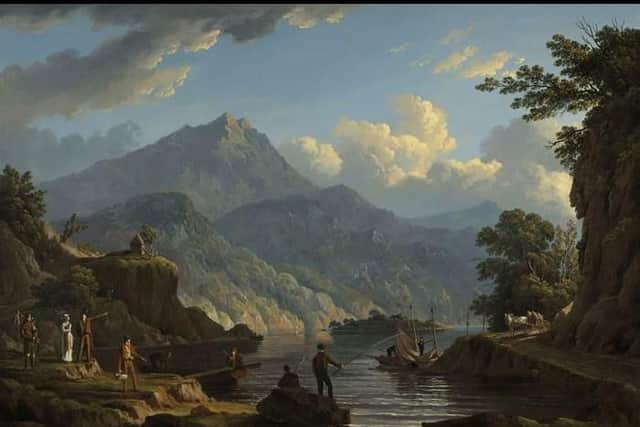Treasures spanning 150 years of Scottish history revealed in National Museum exhibition


The National Museum of Scotland has deployed more than 300 objects to show how the “romantic and heroic” images of Scotland were shaped and scotching long-held misconceptions and myths about tartan, bagpipes, Gaelic and famous works of art.
Costumes, weapons, trophies, paintings, manuscripts, jewellery, and glassware linked to the Royal Family, Bonnie Prince Charlie, Robert Burns, Sir Walter Scott, Ludwig van Beethoven and Felix Mendelssohn, as well as the earliest tourist souvenirs to go on sale in Scotland, will be used to explore how they helped transform its image by the start of the 20th century.
Advertisement
Hide AdAdvertisement
Hide AdKey episodes recalled include the pomp and pageantry of King George IV’s visit to Edinburgh in 1822, the first time a reigning monarch had set foot in Scotland since 1651, when Sir Walter Scott and the historian Colonel David Stewart staged a three-week programme of patriotic events and urged the public to wear Highland dress to help demonstrate Scotland’s loyalty to the monarchy. By the end of the 19th century the Royal Family had created a retreat at Balmoral, in Aberdeenshire, and fully embraced Highland culture and tartan fashion.


The show, Wild and Majestic, challenges long-held claims that tartan, bagpipes and all Gaelic were all outlawed in the wake of the crushing of the Jacobite rebellions. However it recalls the impact of a law banning the wearing of Highland dress and how this was interpreted in different ways across the Highlands.
The show explores how Highland clubs and societies tried to reverse the decline in the use of Gaelic and the playing of bagpipes – but divided opinion at a time when the Highland Clearances had been ordered by wealthy landowners.
The exhibition includes a celebration of Ossian, the third century Gaelic bard championed by the 18th century schoolmaster and poet James Macpherson, despite huge controversy at the time over how authentic his English translations were and whether Ossian had even existed.
Advertisement
Hide AdAdvertisement
Hide AdIt dispels the oft-repeated suggestion Mendelsshon’s overture The Hebrides was inspired by a trip to Fingal’s Cave, on the Isle of Staffa, when he wrote it travelling between Fort William and Mull. Also on display is an original score by Beethoven of one of the Burns poems he was commissioned to set music to by Edinburgh publisher George Thomson.


Dr Patrick Watt, curator of the exhibition, which runs until November, said: “This is a contested, complex history, and also a fascinating one. There are competing claims, still, over the extent to which those symbols of Scotland we see today are romantic inventions, or authentic expressions of an ancient cultural identity.
“We will show how cultural traditions were preserved, idealised and reshaped to suit contemporary tastes against a background of political agendas, and economic and social change.”